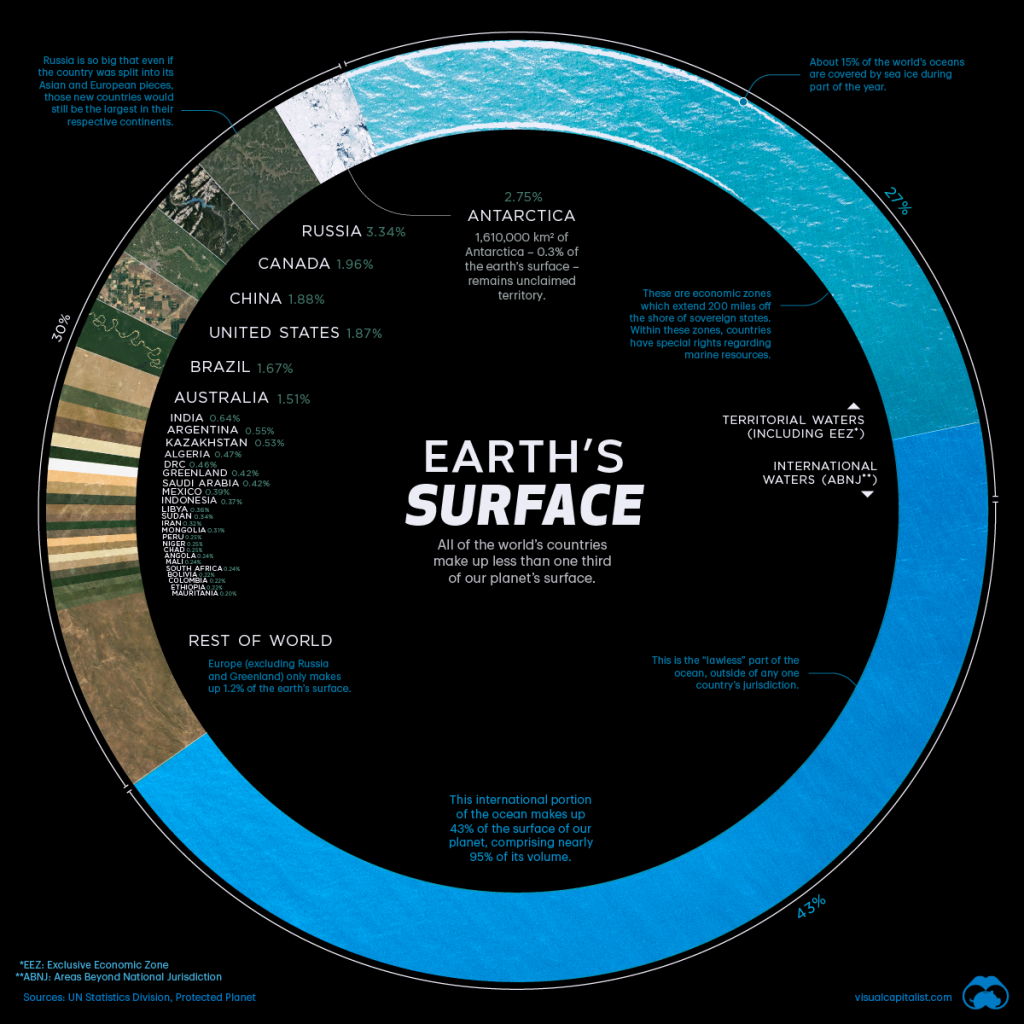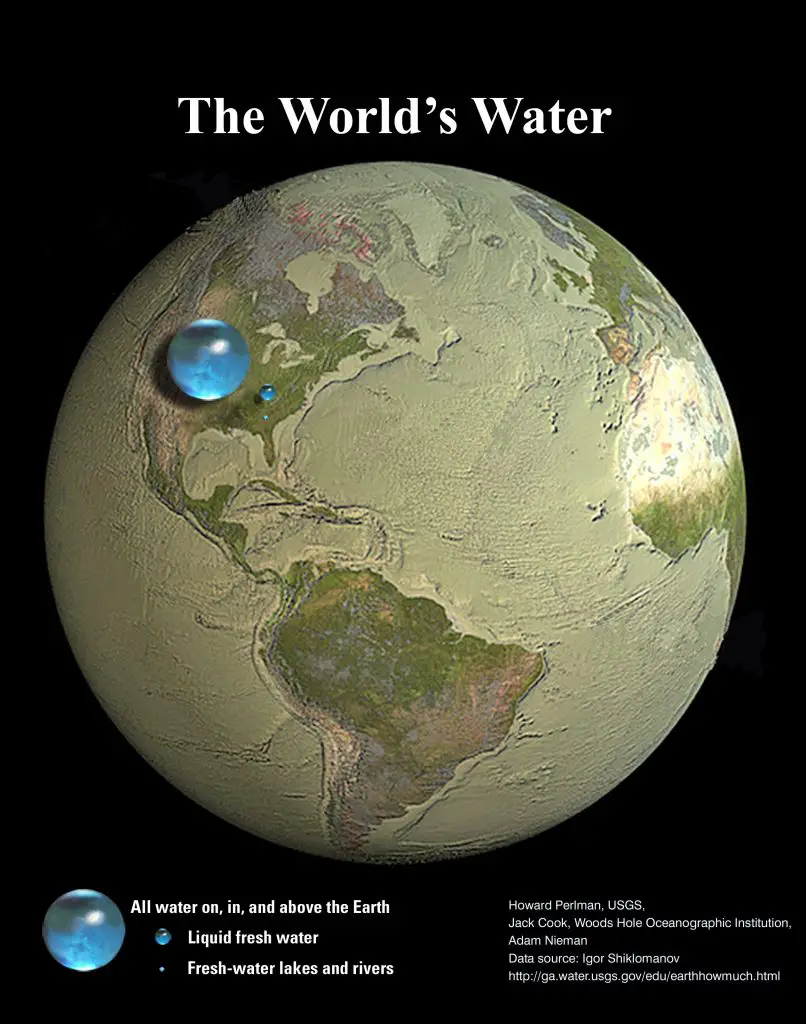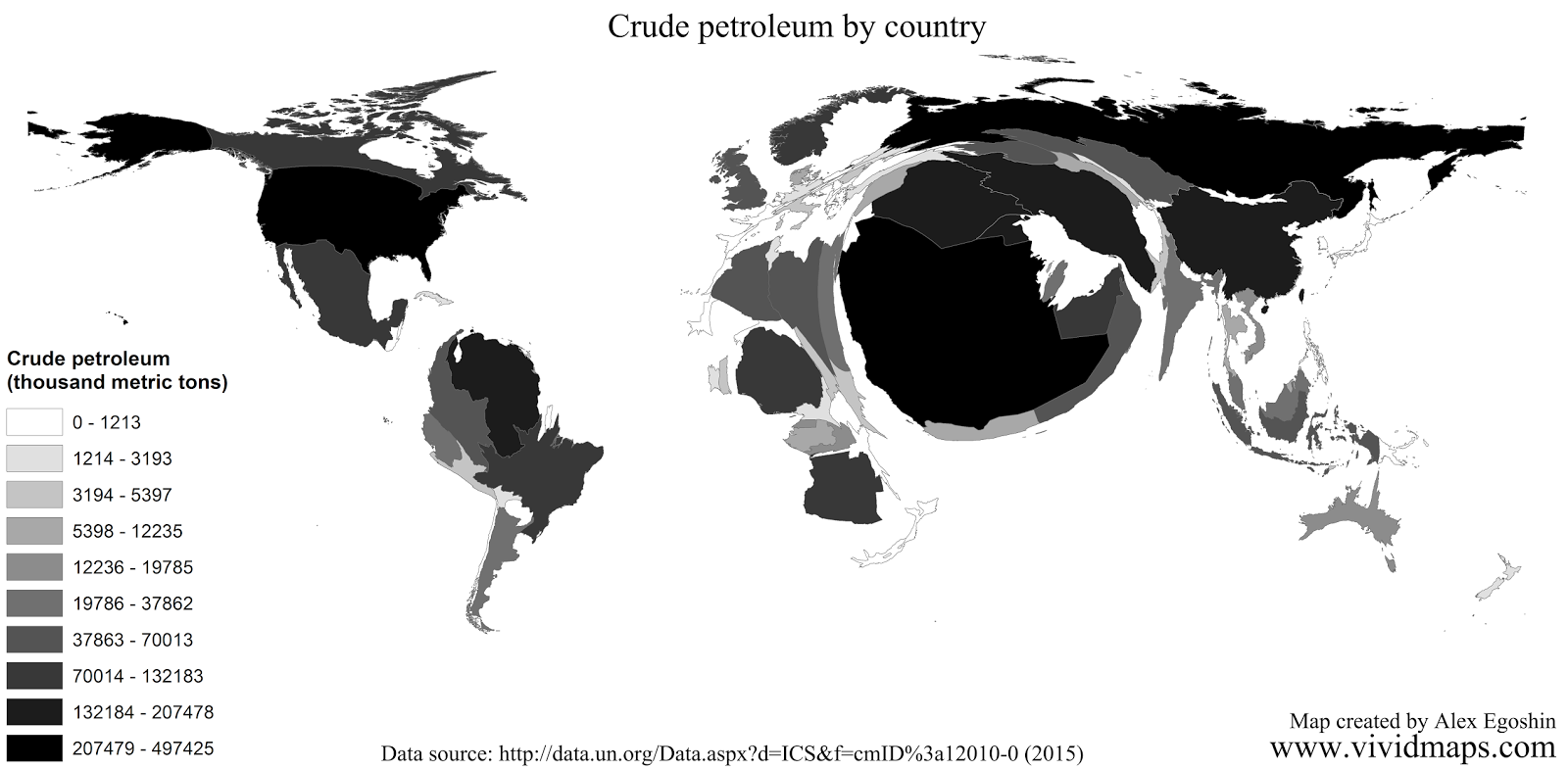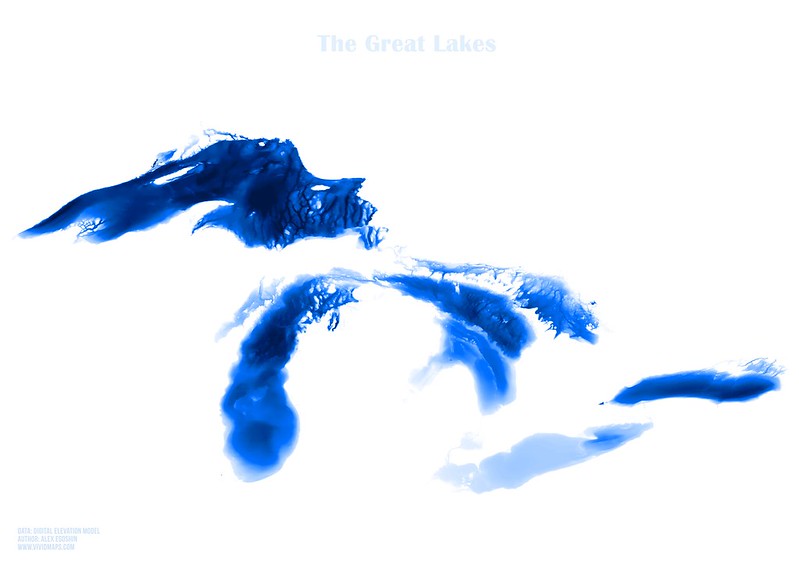Earth’s surface visualized
The Total Surface Area of our planet is about 509.6 million square km or 197 million square miles. The land occupies only 29% of the Earth’s Surface (148.3 million sq km or 57.3 million sq mi).
Antarctica is the largest landmass covering 2.7% of the planet’s surface (14 million sq km or 5.4 million sq mi). Moreover, 1.6 million square kilometers (1.0 million sq mi) of Antarctica or 0.3% of the Earth’s Surface remains unclaimed territory.
The largest countries by surface area are Russia (3.35%), Canada (1.96%), China (1.88%), United States (1.87%), Brazil (1.67%), and Australia (1.51%). Together they occupy approximately 12.24% of the planet’s surface. Europe excludes Russia, and Greenland only makes up 1.2% of the Earth’s surface.
Russia is so big that even if we split the nation between its European and Asian and parts, those new areas would yet be the largest in Europe and Asia.
Deserts make up 33 percent or 1/3rd of the land’s surface area.
VisualCapitalist made a brilliant chart, visualizing the surface of our planet.

70% of the Earth’s total surface is covered with water (361. 7 million sq km or 139. 7 million sq mi): 27% territorial waters (exclusive economic zones) and 43% international waters or areas beyond national jurisdiction. 97% of all water on the planet is salt water, and only 3% is freshwater.
At first glance, it may seem that the Earth is a watery world, but this is not true. The globe visualization created by the U.S. Geological Survey shows blue spheres depicting relative amounts of planet’s water compared to Earth’s size.

The volume of the most significant sphere amid drained oceans, depicting all water on, in, and above the planet, would be approximately 1.4 billion cubic kilometers (333 million cubic miles) and be around 1,385 kilometers (860 miles) in diameter.
The smaller sphere depicts the Earth’s freshwater. This sphere’s volume would be about 10.6 million cubic kilometers (2.6 million cubic miles) and make a sphere around 272.8 kilometers (169.5 miles) in diameter.
If you look closely, you will see a tiny sphere representing fresh water in all the rivers, lakes, and lakes of our planet. This sphere’s volume is approximately 93 thousand cubic kilometers (22 thousand cubic miles), and the diameter is about 56.2 kilometers (34.9 miles). Lake Michigan seems way more significant than this sphere, but this bubble’s high is almost 35 miles, while the average depth of Lake Michigan is less than 91 meters (300 feet).








